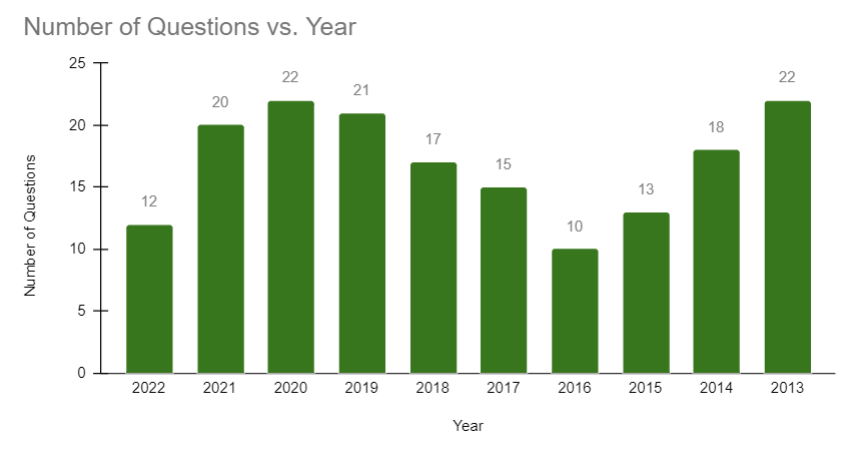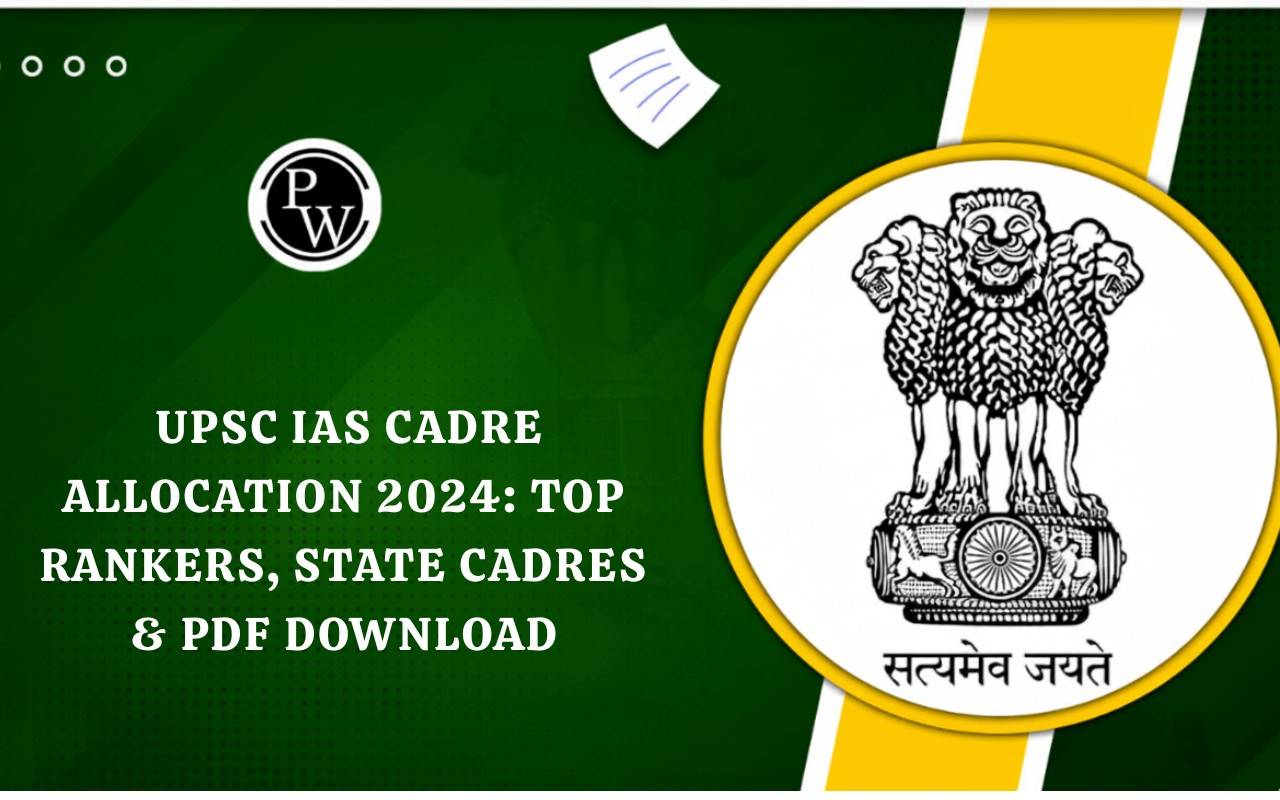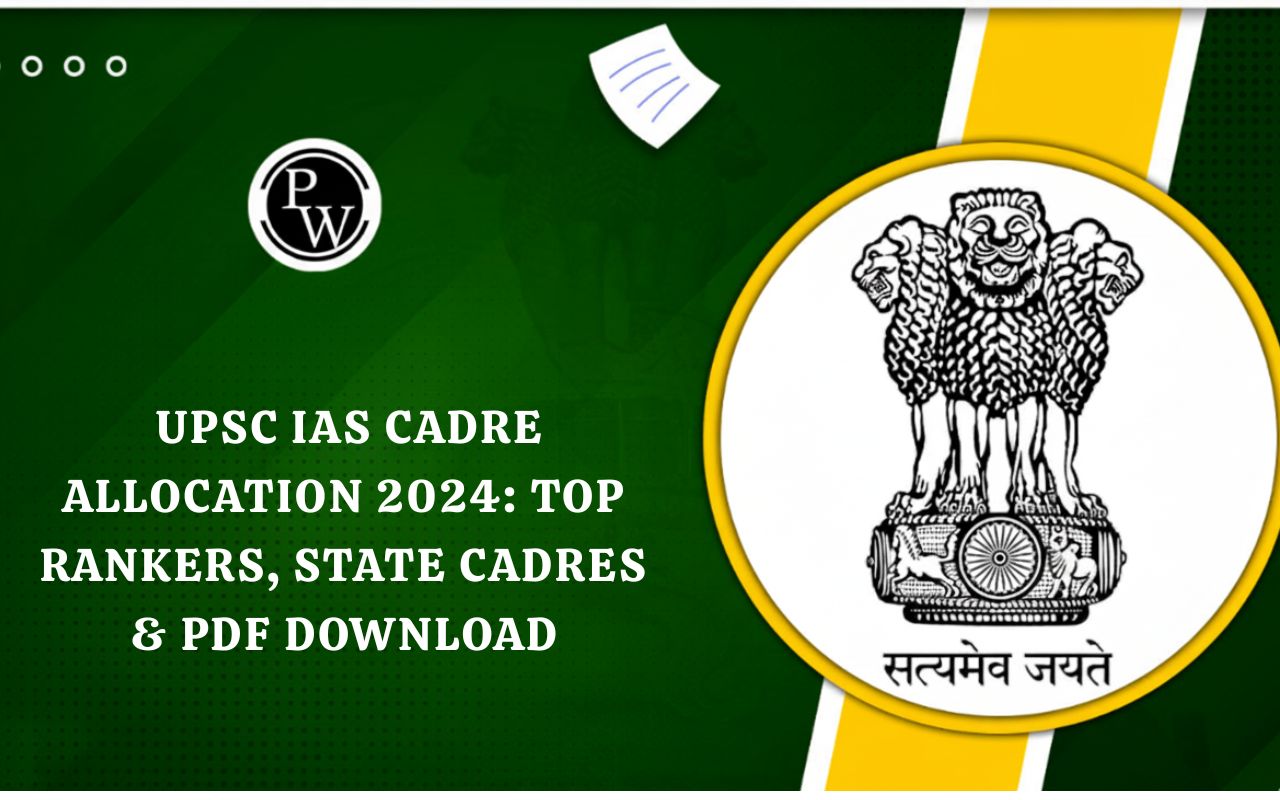
UPSC Prelims Environment Questions: The Environment and Ecology subject has become significant since the integration of UPSC CSE Prelims and UPSC IFoS Prelims . Every year around 20 to 22 Environment questions are asked in UPSC Prelims. Also, Environment and Ecology questions sometimes overlap with the geography and agriculture section.
Therefore, to ace this subject, integrated preparation is essential. For example, while studying any species, check its recent news, its habitat, and conservation initiatives. This approach will also come in handy while solving UPSC Prelims Environment questions 2026. Analyse year-wise trends and topic-wise Environment questions as you prepare for UPSC Prelims 2026 here.UPSC Prelims Environment PYQs PDF
UPSC Prelims Environment questions focus on important topics related to ecology, climate change, biodiversity, and environmental policies. These questions test candidates' understanding of environmental issues affecting India and the world. Reviewing previous years' questions and their answers helps candidates identify key themes and prepare effectively for UPSC 2026 Exam.| UPSC Prelims Solved PYQs | |
| Title | Link |
| UPSC Prelims Environment Questions with Answers | UPSC Prelims Environment and Ecology PYQs |
| Other Subject Questions in UPSC Prelims | UPSC Prelims PYQs |
UPSC Prelims Environment Questions 2024
The UPSC Prelims 2024 had a good number of questions on the environment subject particularly species-based. Candidates were expected to have a decent knowledge of the awareness-based questions (e.g., on chewing gum) and GK-based questions (e.g., on lions). Here are UPSC Prelims Environment Questions 2024 with answers:1. According to the Environmental Protection Agency (EPA), which one of the following is the largest source of sulphur dioxide emissions?
- Locomotives using fossil fuels
- Ships using fossil fuels
- Extraction of metals from ores
- Power plants using fossil fuels
- Statement I: India does not import apples from the United States of America.
- Statement-II: In India, the law prohibits the import of Genetically Modified food without the approval of the competent authority.
- Both Statement-I and Statement-II are correct and Statement-II explains Statement-I.
- Both Statement-I and Statement-II are correct, but Statement-II does not explain Statement-I.
- Statement I is correct, but Statement II is incorrect.
- Statement I is incorrect, but Statement II is correct.
3. The organisms “Cicada, Froghopper and Pond skater” are :
(a) Birds(c) Insects
(d) Reptiles- Statement I: Many chewing gums found in the market are a source of environmental pollution.
- Statement II: Many chewing gums contain plastic as gum base.
- Both Statement-I and Statement-II are correct and Statement-II explains Statement-I
- Both Statement-I and Statement-II are correct, but Statement-II does not explain Statement-I
- Statement I is correct, but Statement II is incorrect
- Statement I is incorrect, but Statement II is correct
| Country | Animal found in its natural habitat | |
| 1. | Brazil | Indri |
| 2. | Indonesia | Elk |
| 3. | Madagascar | Bonobo |
(d) None
6. Consider the following statements:- Lions do not have a particular breeding season.
- Unlike most other big cats, cheetahs do not roar.
- Unlike male lions, male leopards do not proclaim their territory by scent marking.
(a) 1 and 2 only
(b) 2 and 3 only7. Consider the following:
- Battery storage
- Biomass generators
- Fuel cells
- Rooftop solar photovoltaic units
(d) All four
8. Which one of the following shows a unique relationship with an insect that has coevolved with it and that is the only insect that can pollinate this tree?(a) Fig
(b) Mahua
(c) Sandalwood
(d) Silk cotton
9. Consider the following:
- Butterflies
- Fish
- Frogs
(c) All three
(d) None10. With reference to perfluoroalkyl and polyfluoroalkyl substances (PFAS) that are used in making many consumer products, consider the following statements:
- PFAS are found to be widespread in drinking water, food and food packaging materials.
- PFAS are not easily degraded in the environment.
- Persistent exposure to PFAS can lead to bioaccumulation in animal bodies.
(d) 1, 2 and 3
11. Consider the following:- Carabid beetles
- Centipedes
- Flies
- Termites
- Wasps
(b) Only three
(c) Only four12. Consider the following statements:
Statement-I: The Indian Flying Fox is placed under the “vermin” category in the Wild Life (Protection) Act, 1972.
Statement II: The Indian Flying Fox feeds on the blood of other animals.
Which one of the following is correct in respect of the above statements?
- Both Statement-I and Statement-II are correct and Statement-II explains Statement-I
- Both Statement-I and Statement-II are correct, but Statement-II does not explain Statement-I
- Statement -I is correct, but Statement II is incorrect
- Statement I is incorrect, but Statement II is correct
UPSC Prelims Environment Questions 2023
The 2023 year saw a slight decrease in UPSC Prelims Environment questions. Also, most of the questions required analytical thinking and a strong command over fundamentals. Here are the Environment questions that were asked in the UPSC Prelims 2023 exam:- The Chief Wildlife Warden of the State becomes the governing authority of such forest
- Hunting is not allowed in such area
- people of such areas are allowed to collect non-timber forest produce
- people of such areas are allowed traditional agricultural practices
Question 2: Consider the following statements:
- In India, the Biodiversity Management Committees are key to the realisation of the objectives of the Nagoya Protocol.
- The Biodiversity Management Committees have important functions in determining access and benefit sharing, including the power to levy collection fees on the access of biological resources within its jurisdiction.
Question 3:
‘Invasive Species Specialist Group’ (which develops the Global Invasive Species Database) belongs to which one of the following organizations?
(a) The International Union for Conservation of Nature
(b) The United Nations Environment Programme
(c) The United Nations World Commission for Environment and Development
(d) The World Wide Fund for Nature
Question 4:
Consider the following statements:
- Statement I: Marsupials are not naturally found in India.
- Statement II: Marsupials can thrive only in montane grasslands with no predators.
Which one of the following is correct in respect of the above statements?
(a) Both Statement I and Statement II are correct, and Statement II is the correct explanation for Statement I.
(b) Both Statement I and Statement II are correct, and Statement II is not the correct explanation for Statement I.
(c) Statement I is correct, and Statement II is incorrect.
(d) Statement I is incorrect, but Statement II is correct.
Question 5:
Consider the following fauna:
- Lion-tailed Macaque
- Malabar Civet
- Sambar Deer
How many of the above are generally nocturnal or most active after sunset?
(a) Only one
(b) Only two
(c) All three
(d) None
Question 6:
Which of the following organisms perform a waggle dance for others of their kin to indicate the direction and the distance to a source of their food?
(a) Butterflies
(b) Dragonflies
(c) Honey Bees
(d) Wasps
Question 7:
Consider the following statements:
- Some mushrooms have medicinal properties.
- Some mushrooms have psychoactive properties.
- Some mushrooms have insecticidal properties.
- Some mushrooms have bioluminescent properties.
How many of the above statements are correct?
(a) Only one
(b) Only two
(c) Only three
(d) All four
Question 8:
Consider the following statements regarding the Indian squirrels:
- They build nests by making burrows in the ground.
- They store their food materials like nuts and seeds in the ground.
- They are omnivorous.
How many of the above statements are correct?
(a) Only one
(b) Only two
(c) All three
(d) None
Question 9:
Consider the following:
- Aerosols
- Foam agents
- Fire retardants
- Lubricants
In the making of how many of the above are hydrofluorocarbons used?
(a) Only one
(b) Only two
(c) Only three
(d) All four
Question 10:
Which one of the following makes a tool with a stick to scrape insects from a hole in a tree or a log of wood?
(a) Fishing cat
(b) Orangutan
(c) Otter
(d) Sloth bear
Question 11:
Consider the following activities:
- Spreading finely ground basalt rock on farmlands extensively
- Increasing the alkalinity of oceans by adding lime
- Capturing carbon dioxide released by various industries and pumping it into abandoned subterranean mines in the form of carbonated waters
How many of the above activities are often considered and discussed for carbon capture and sequestration?
(a) Only one
(b) Only two
(c) All three
(d) None
Question 12:
Consider the following statements:
- Carbon fibers are used in the manufacture of components used in automobiles and aircraft.
- Carbon fibres once used cannot be recycled.
Which of the statements given above is/are correct?
(a) 1 only
(b) 2 only
(c) Both 1 and 2
(d) Neither 1 nor 2
Question 13:
Consider the following statements regarding mercury pollution:
- Gold mining activity is a source of mercury pollution in the world.
- Coal-based thermal power plants cause mercury pollution.
- There is no known safe level of exposure to mercury.
How many of the above statements are correct?
(a) Only one
(b) Only two
(c) All three
(d) None
Question 14:
Consider the following infrastructure sectors:
- Affordable housing
- Mass rapid transport
- Health care
- Renewable energy
On how many of the above does the UNOPS Sustainable Investments in Infrastructure and Innovation (S3i) initiative focus on its investments?
(a) Only one
(b) Only two
(c) Only three
(d) All four
Year Wise Trend of UPSC Prelims Environment Questions
The year wise trend of Environment and Ecology questions reflects that on average 20 questions have been asked from this section since 2018. From 2018 to 2021, this section saw a good number of questions while in 2022 and 2023 saw a decline. Due to overlapping with current affairs, agriculture, and some sections of geography, it can be concluded that the Environment is one of the most important subjects. The trend of UPSC Prelims Environment questions is given below:
Topic Wise UPSC Prelims Environment Questions 2026
In the Environment section, most repeated themes can help candidates tackle the questions in UPSC Prelims 2026. To identify these themes and high-yield topics, candidates should go through the previous year's question papers. Some of the major themes are biodiversity, conservation policies, natural vegetation, climate change, pollution, etc.
Environment and Ecology Fundamentals
Which one of the following terms describes not only the physical space occupied by an organism but also its functional role in the community of organisms? (2013)
(a) Ecotone
(b) Ecological niche
(c) Habitat
(d) Home range
Question 2:
Among the following crops, which one is the most important anthropogenic source of both methane and nitrous oxide? (2022)
(a) Cotton
(b) Rice
(c) Sugarcane
(d) Wheat
Photochemical smog is a result of the reaction among: (2013)
(a) NO2, O3, and peroxyacetyl nitrate in the presence of sunlight
(b) CO, O2, and peroxyacetyl nitrate in the presence of sunlight
(c) CO, CO2, and NO2 at low temperature
(d) High concentration of NO2, O3, and CO in the evening
With reference to ‘Red Sanders’, sometimes seen in the news, consider the following statements: (2016)
- It is a tree species found in a part of South India.
- It is one of the most important trees in the tropical rainforest areas of South India.
Which of the statements given above is/are correct?
(a) 1 only
(b) 2 only
(c) Both 1 and 2
(d) Neither 1 nor 2
Conservation Biology
Other than poaching, what are the possible reasons for the decline in the population of Ganges River Dolphins?
- Construction of dams and barrages on rivers
- An increase in the population of crocodiles in rivers
- Getting trapped in fishing nets accidentally
- Use of synthetic fertilizers and other agricultural chemicals in crop-fields in the vicinity of rivers.
Select the correct answer using the code given below.
(a) 1 and 2 only
(b) 2 and 3 only
(c) 1, 3 and 4 only
(d) 1, 2, 3 and 4
Which one of the following National Parks has a climate that varies from tropical to subtropical, temperate, and arctic? (2015)
(a) Khangchendzonga National Park
(b) Nanda Devi National Park
(c) Neora Valley National Park
Conservation Strategies
The most important strategy for the conservation of biodiversity together with traditional human life is the establishment of: (2014)
(a) Biosphere reserves
(b) Botanical gardens
(c) National parks
(d) Wildlife sanctuaries
International Agreements
If a wetland of international importance is brought under the ‘Montreux Record’, what does it imply?
(a) Changes in ecological character have occurred, are occurring, or are likely to occur in the wetland as a result of human interference.
(b) The country in which the wetland is located should enact a law to prohibit any human activity within five kilometers from the edge of the wetland.
(c) The survival of the wetland depends on the cultural practices and traditions of certain communities living in its vicinity and therefore the cultural diversity therein should not be destroyed.
(d) It is given the status of ‘World Heritage Site’.
National Environmental Policies
The Genetic Engineering Appraisal Committee is constituted under the (2015)
(a) Food Safety and Standards Act, 2006
(b) Geographical Indications of Goods (Registration and Protection) Act, 1999
(c) Environment (Protection) Act, 1986
(d) Wildlife (Protection) Act, 1972
- To provide modern technology, training in modern farming methods, and financial support to local communities of identified GIAHS so as to greatly enhance their agricultural productivity.
- To identify and safeguard eco-friendly traditional farm practices and their associated landscapes, agricultural biodiversity, and knowledge systems of the local communities.
- To provide Geographical Indication status to all the varieties of agricultural produce in such an identified GIAHS.
Select the correct answer using the code given below.
(a) 1 and 3 only
(b) 2 only
(c) 2 and 3 only
(d) 1, 2 and 3
UPSC Prelims Environment Questions FAQs
How many questions are asked from the environment in UPSC prelims?
Is the environment section important for UPSC Prelims?
How to cover the Environment and Ecology for UPSC prelims?
What is the weightage of the environment in UPSC Prelims?








